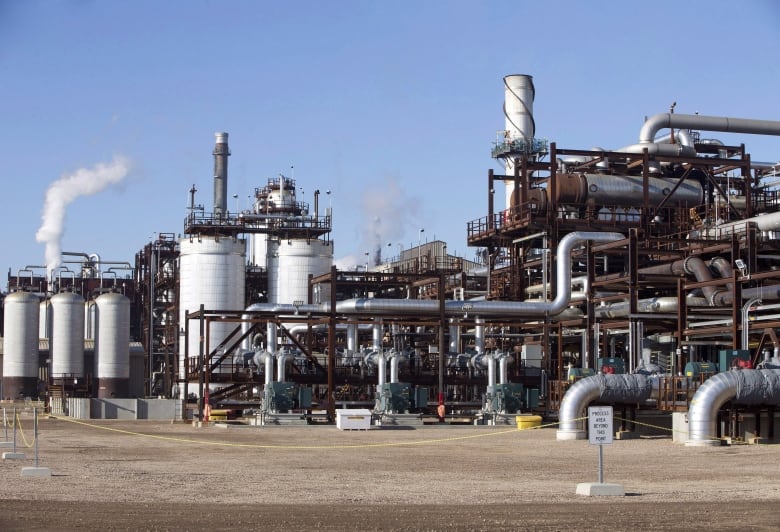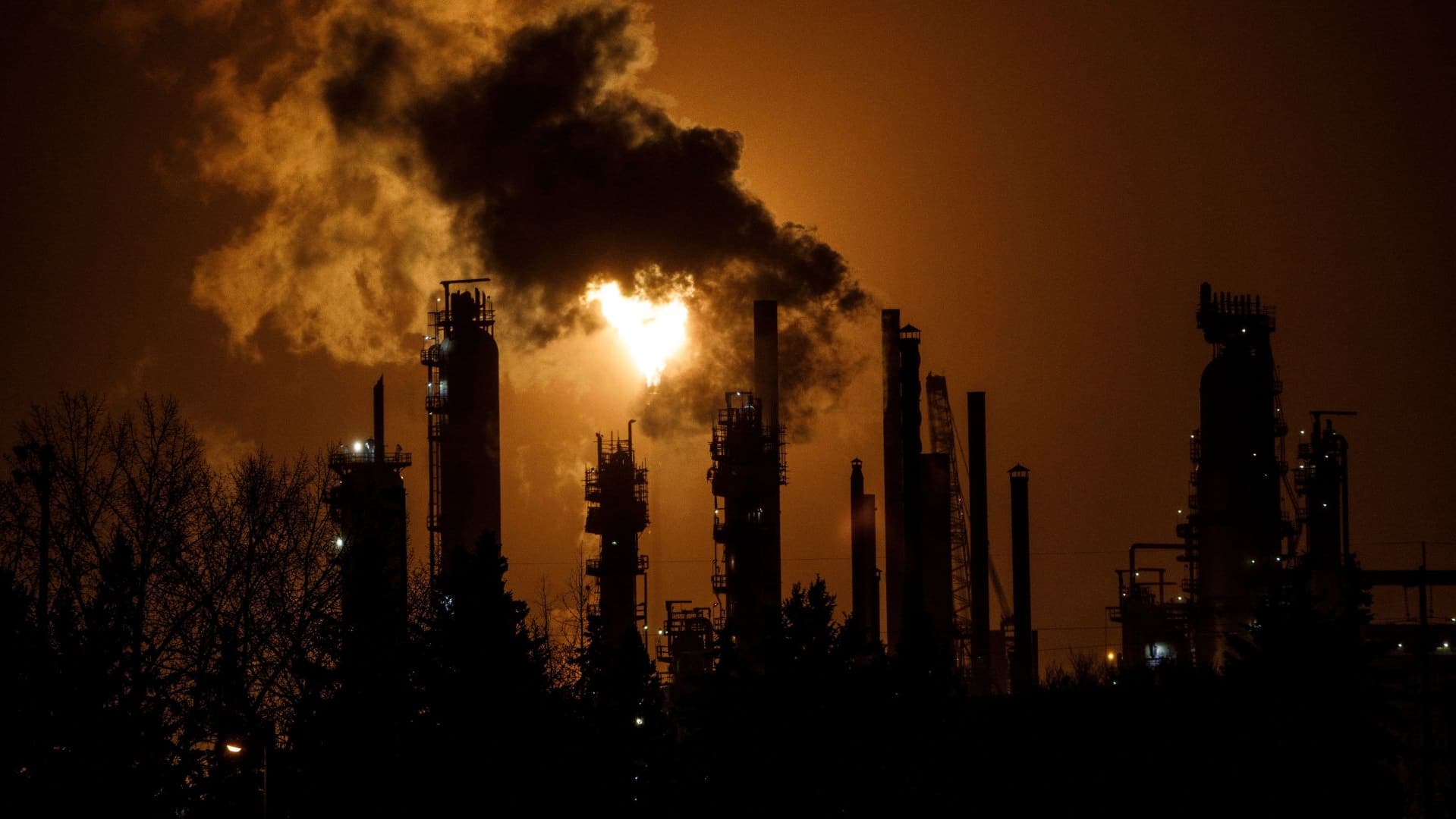
A new report says the federal government is providing billions of dollars in financial support for the fossil fuel industry, despite measures announced last year to limit certain types of subsidies for the oil and gas industry.
The analysis, released today by the advocacy group Environmental Defence, estimated that Ottawa offered up at least $18.6 billion in support of the fossil fuel and petrochemical industries in 2023.
That tally includes:
- $8 billion in loan guarantees for the Trans Mountain pipeline.
- $7.4 billion in public financing through the Crown corporation Export Development Canada.
- $1.3 billion for carbon capture and storage projects.
Climate activists have for years been calling on Canada to scale back its support of the fossil fuel industry and instead prioritize cleaner, renewable forms of energy.
“This is kind of the litmus test of whether the government is actually taking serious action,” said Julia Levin, an associate director at Environmental Defence who prepared the report.
“It’s failing that litmus test by continuing to give federal subsidies.”
Environmental Defence’s numbers are down only slightly from last year, when it calculated $20.2 billion in financial support — even though Environment Minister Steven Guilbeault eliminated “inefficient” fossil fuel subsidies in July.
Environment and Climate Change Canada did not immediately return a request for comment Wednesday.
‘All these other tentacles’
The framework regarding inefficient subsidies was meant to phase out funding for oil and gas, with some exceptions, such as for projects that reduce greenhouse gas emissions, support clean energy or capture carbon and store it underground.
“We’re eliminating subsidies to produce fossil fuels in Canada, unless those subsidies are aimed at decarbonizing the emissions of the sector,” Guilbeault said at the time.
But the new rules do not apply to public financing, such as commercially viable loans, which the federal government does not consider a form of subsidy.
Regardless of what term is used, the government’s financial backing gives the fossil fuel industry an advantage over energy alternatives, said Paasha Mahdavi, an assistant professor of political science at University of California, Santa Barbara, and an expert in oil subsidies.
Mahdavi, who was not involved in the report, said the findings illustrate “all these other tentacles through which financing and financial support can exist.”
“You still have money from the government that’s creating an uneven playing field,” he said, citing the billions in loan guaranteed for Trans Mountain.
“That’s still a pretty big deal, because that allows an oil company or a pipeline access to cheap capital, and that’s right now one of the very important levers to pull to try to make decarbonization and energy transitions more successful.”
Levin said the federal government makes it difficult to track and calculate the financing across departments.
“The government has not improved its transparency practices at all,” she said.
“That means we are still required to do kind of a piecemeal analysis to the best of our ability because the government doesn’t produce any kind of reporting on its own.”
Laura Cameron, a policy advisor for the International Institute for Sustainable Development, said the report shows “there is still far too much public money being invested in fossil fuels.”
“Continued support for this industry works directly against climate action and the energy transition,” she said in a statement.

The analysis found that Export Development Canada provided public financing to many companies, often at subsidized rates. The financing included $300 million for Nova Chemicals Corporation, a petrochemical company, and $200 million for Enbridge.
The $1.3 billion for carbon capture projects in 2023 is set to increase in the years to come, under a new tax credit aimed at helping projects get off the ground. Proponents say it will help the oil and gas industry cut their emissions while maintaining production, while critics say the technology remains unproven at a large scale and the money could be better spent elsewhere.
The Parliamentary Budget Officer estimates the carbon capture, utilization and storage investment tax credit will cost $5.7 billion over five years.
Industry stresses economic benefits
The Canadian Association of Petroleum Producers (CAPP) says on its website that Canada’s oil and gas producers “do not receive government production subsidies, nor is the industry requesting or expecting any such support.”
Asked for more details on their position, CAPP spokesperson Jay Averill said in a statement that oil and natural gas production in Canada is “subject to royalties and taxes from every level of government, working to the benefit of Canadians right across the country.”
“This differs from most other producing nations and is the exact opposite of a subsidy,” Averill said.
Averill stressed the importance of the oil and gas sector to the economy. He said revenues from oil and gas reached $45 billion last year, and that capital investment from the industry is expected to reach about $40 billion.
Many international organizations, including the United Nations Development Programme, the International Energy Agency and the International Monetary Fund (IMF) have called for an end to fossil fuel subsidies.
Critics argue they undermine climate policies by distorting the market and delaying the transition to alternative technologies.
More than a dozen Alberta oilsands facilities are emitting potentially harmful air pollutants at 20 to 64 times the rate reported to the government, according to new research published in the journal Science.
According to the IMF, global subsidies surpassed $7 trillion US for the first time last year.
The assessment included what are called “implicit subsidies,” which are the environmental costs of air pollution and climate damage from fossil fuels that producers and consumers aren’t required to pay.
The IMF found that Canada doled out $2 billion in explicit fossil fuel subsidies; it calculated that the implicit cost was another $36 billion.
Environmental Defence is pressing Finance Minister Chrystia Freeland to include a tax on the windfall profits of the oil and gas industry in the 2024 budget, set to be tabled April 16.
“We should be taxing those windfall profits and returning that money to Canadians to meet their climate and affordability needs,” Levin said.


